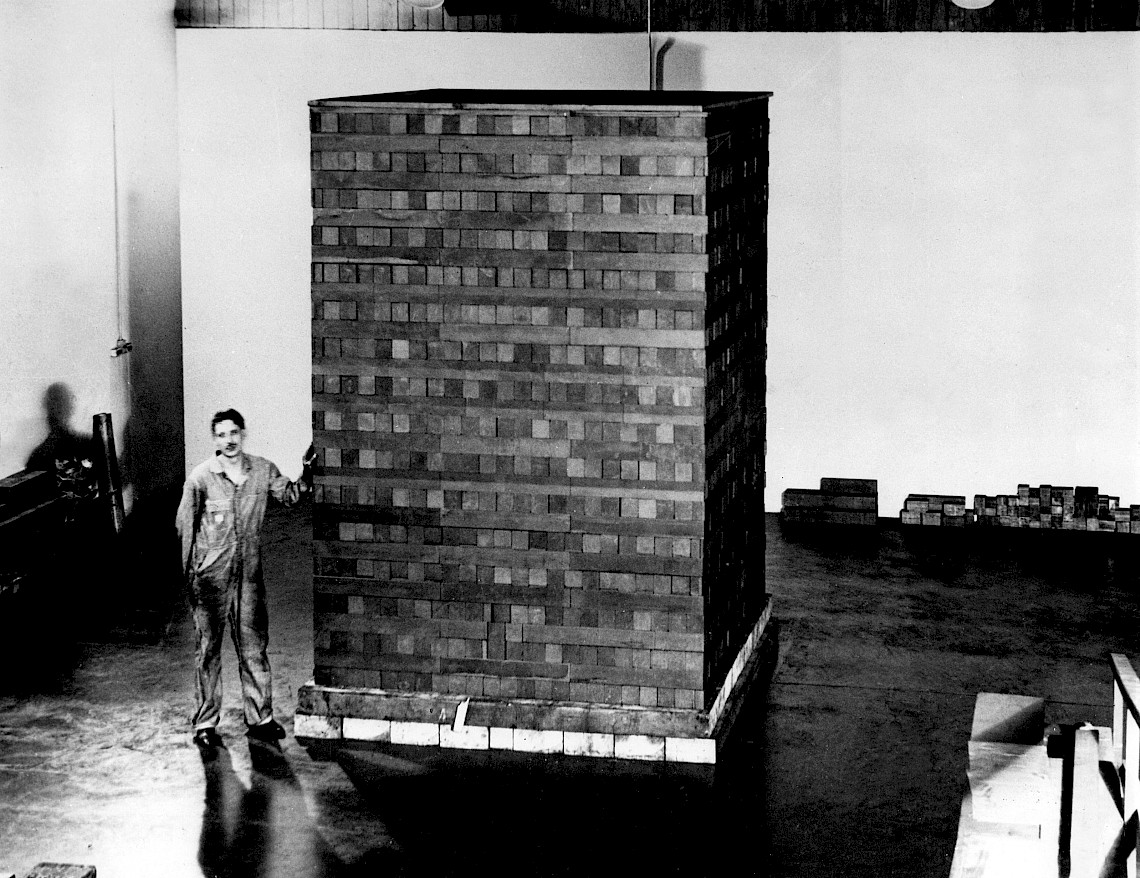The Manhattan Project may be named after New York City’s most famous borough, but the atomic age really started several hundred miles away on the South Side of Chicago.
Thanks to an installation at this fall’s Chicago Architecture Biennial by Italian architecture firm The Empire, visitors will get an immersive history lesson on the the very first nuclear reaction, which took place at the University of Chicago in Hyde Park under the watchful eye of the pathbreaking physicist Enrico Fermi.
The world’s first reactor, codenamed the Chicago Pile-1, looked nothing like the crisp image of laboratory efficiency that wartime science might suggest. Instead, the contraption was true to its name. Fermi and other scientists at the UChicago’s Metallurgic Laboratory, or “Met Lab,” improvised the design of the pile by laying large bricks of graphite crosswise in layers—resembling an enormous game of Jenga.
Reaching fifty-seven layers and at least twice the height of its builders, the reactor took up most of an underground squash court beneath the University’s Stagg Field. Some of the graphite bricks were fitted with pieces of uranium, which ultimately powered the reaction, while others held rods of cadmium, which kept the uranium inert until they were removed.
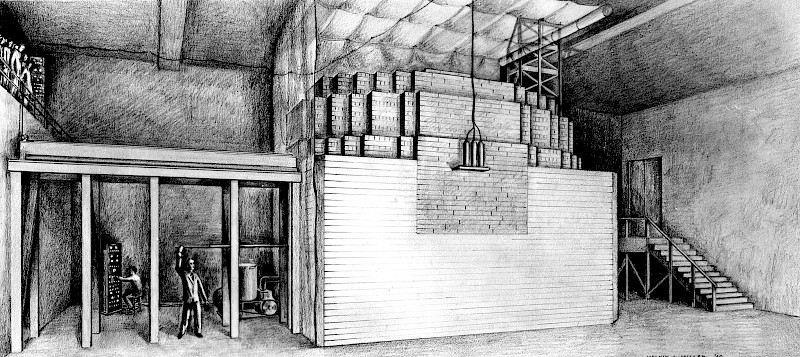
The pile was was completed on December 1, 1942, and the test was held the next day. Fermi was calm under pressure, even though he knew there was an outside chance the reaction could release radiation into the surrounding neighborhood. He even declined to tell the mayor of Chicago that the test was proceeding.
In the end, the experiment went off without a hitch. Fermi ordered the cadmium rods removed, and the scientists watched a chart recorder as the neutron count climbed faster and faster until it could no longer keep up with the reaction. The pile had “gone critical.”
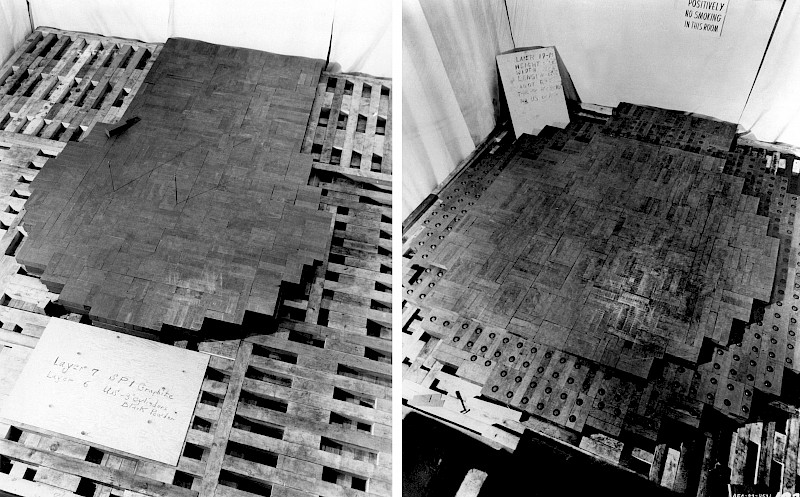
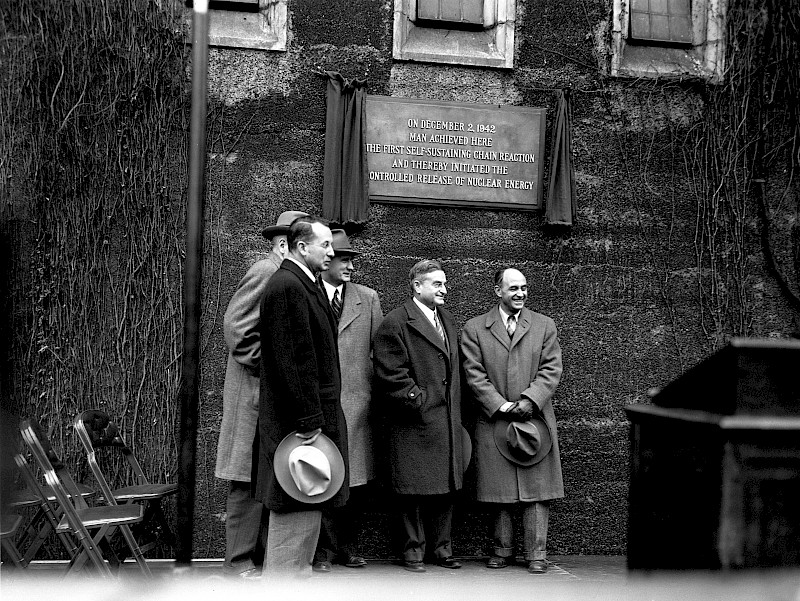
The scientists who witnessed the dawn of atomic energy there in the squash court only had a brief moment to savor their accomplishment. War was raging and the complicated work of the Manhattan Project was being conducted at breakneck speed. The pile was disassembled and quickly rebuilt it at Argonne Laboratory a few miles to the west, where it instantly became part of the United States’ rapidly expanding nuclear infrastructure.
This origin story caught the interest of Ludovico Centis, of the Italian architecture studio The Empire, who has been researching the architecture of the atomic bomb since 2013. Centis has crisscrossed the United States exploring the infrastructure of the Manhattan Project and spent time in the American West getting as close as possible to the first atomic facilities and nuclear test sites.
The Empire considers these places together as an interconnected monument to the atomic age, albeit one whose remote territories and radioactive lifespan challenge conventional frameworks for preservation and interpretation.
“These are sites that are still crucial today for the U.S. in terms of scientific research. But the idea is to study these spaces and make an installation that somehow speaks to an issue that goes beyond borders,” said Centis.”
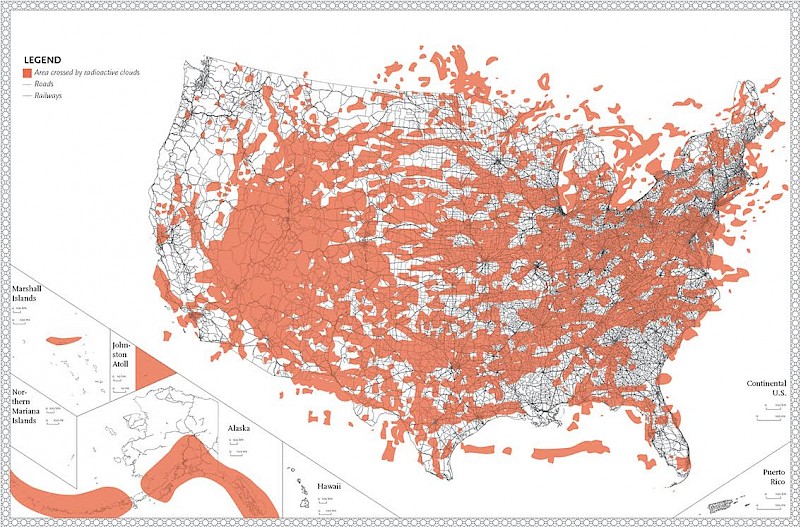
After all, atomic architecture has reordered huge swaths of the North American landscape and indirectly affected the course of hundreds of thousands of human lives. After mapping out the the far-flung network of atomic sites dotting the American landscape, Centis said, “You’re amazed at the scale. It took the effort of a whole country to reach this one goal. You become aware of the engineering and economic resources it took, but also the territorial ones: the raw materials used and and spaces literally turned into wastelands.”
From bombing ranges in the western desert to secret atomic cities and high-tech laboratories, it can be difficult to reconstruct the path that nuclear science took.
“The program was so massive that it’s very tricky to track down each place where activities happened,” said Centis. “Sometimes not even the army itself knows. I’ve looked at documents where two people in the army are asking each other for information about the sites. Their answer is usually, ‘It probably happened here, or rumors say it did happen here, but we have no proof.’”
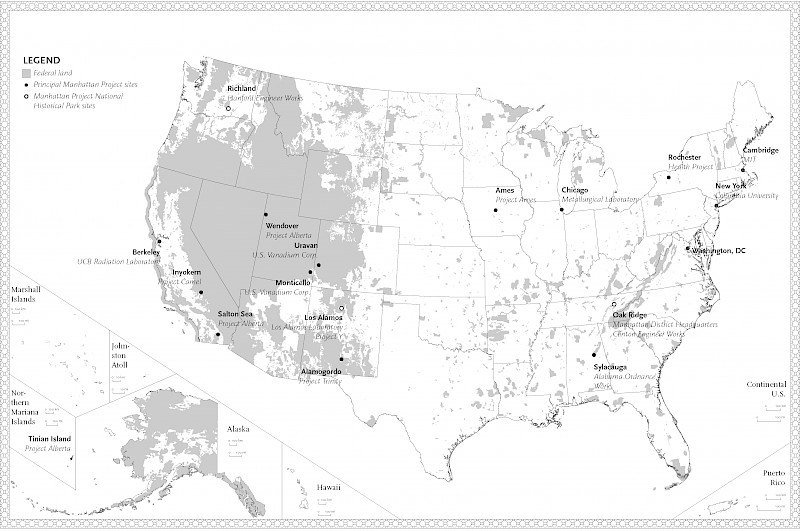
Seventy five years after the Chicago Pile went critical, Centis is bringing his research back to the source. At the Biennial, visitors will find a wealth of archival images that Centis has collected and maps he has created of American atomic sites.
They will also encounter installations that evoke the volume of the pile and the often haphazard construction process that led to its success. The Chicago Cultural Center will host an 8-foot cube replicating the dozens of early iterations that Fermi’s team built to test their technology. A larger replica of the full-scale pile will be on display at the University of Chicago itself, in time to celebrate the 75th anniversary of the reaction on December 2.
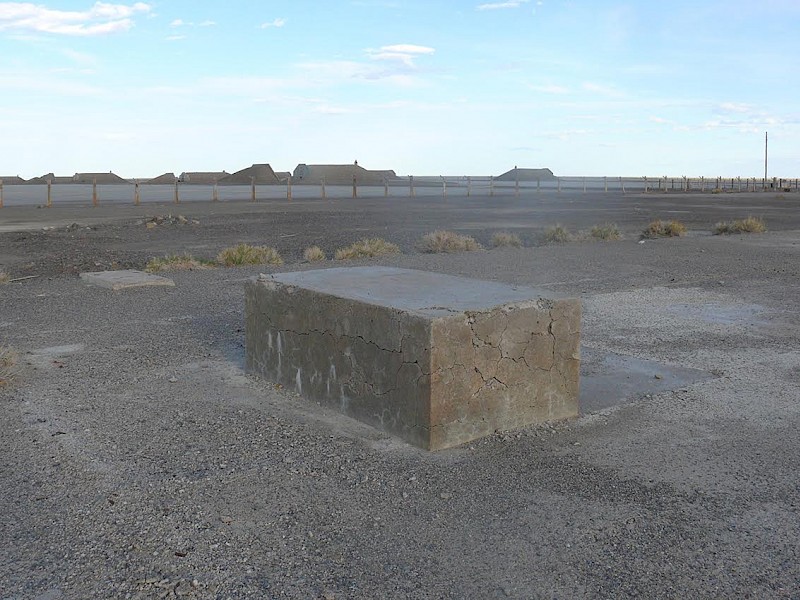
The mute monumentality of these recreations will be intentional. Centis was influenced by the ideas of Gunther Anders, an Austrian philosopher in the orbit of the Frankfurt School who emigrated to the Unites States and wrote extensively after the war about the traumatic worldwide cultural impact of the bomb.
Anders, who helped found the anti-nuclear movement, argued that the use of nuclear weapons represented a Promethean shift in human history. For the first time, people were capable of initiating their own apocalypse. Centis hopes to channel the cosmic aura of that moment into a broader set of architectural strategies for memorializing the Manhattan Project at large.
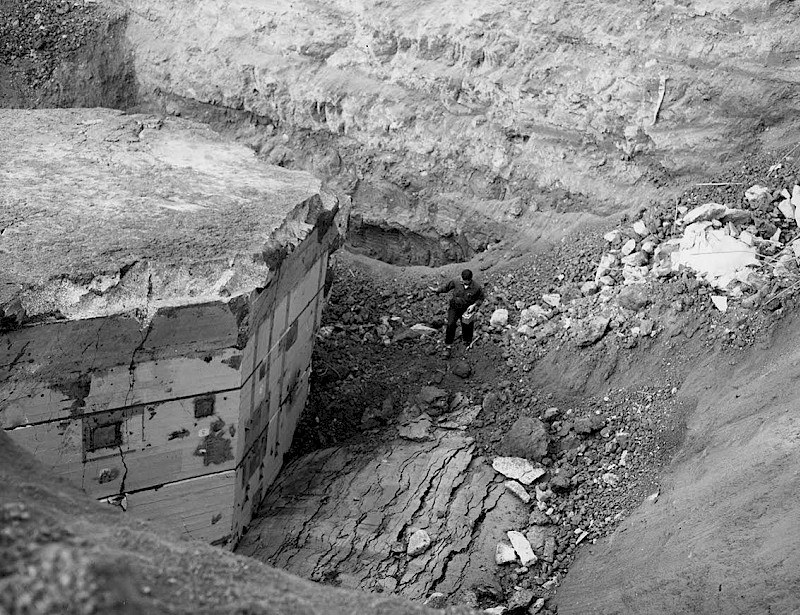
“The birth of the atomic age comes with a kind of religious quality,” said Centis. “Most test sites are out in the desert, which in religion is often a very loaded environment. And when nuclear disasters happen, as in Fukushima or Chernobyl, we have this feeling that something divine has been unleashed that we cannot control—like a biblical flood.”
Like the well-known monolith in the opening scene of 2001: A Space Odyssey, the architect sees the pile itself as a totem that can take on these seemingly mystical associations.
“The shape of pile itself reminds me of an altar or a Maya temple,” said Centis.
As for whether Biennial visitors are in for a spiritual experience of their own, Centis was circumspect. “I think you cannot control that, but I could imagine that something might happen.”
Learn more about how design shaped the nuclear era by clicking in the channel below. Join Are.na to collaborate and add more resources.



